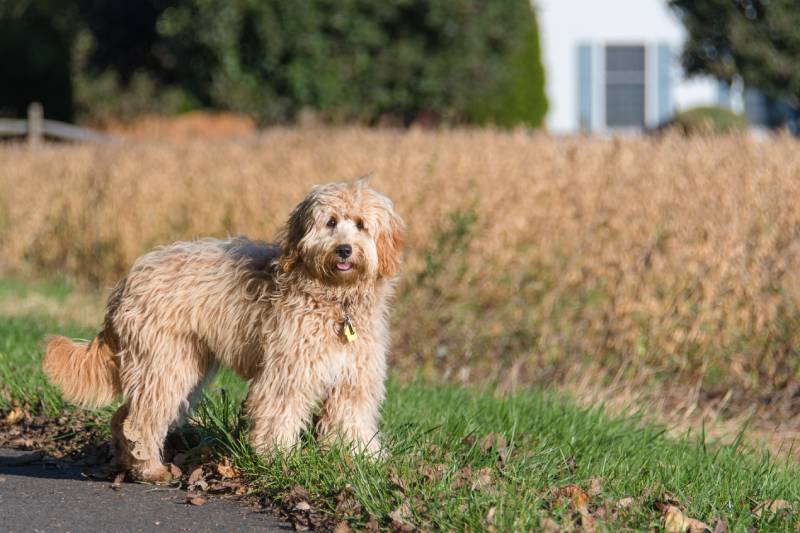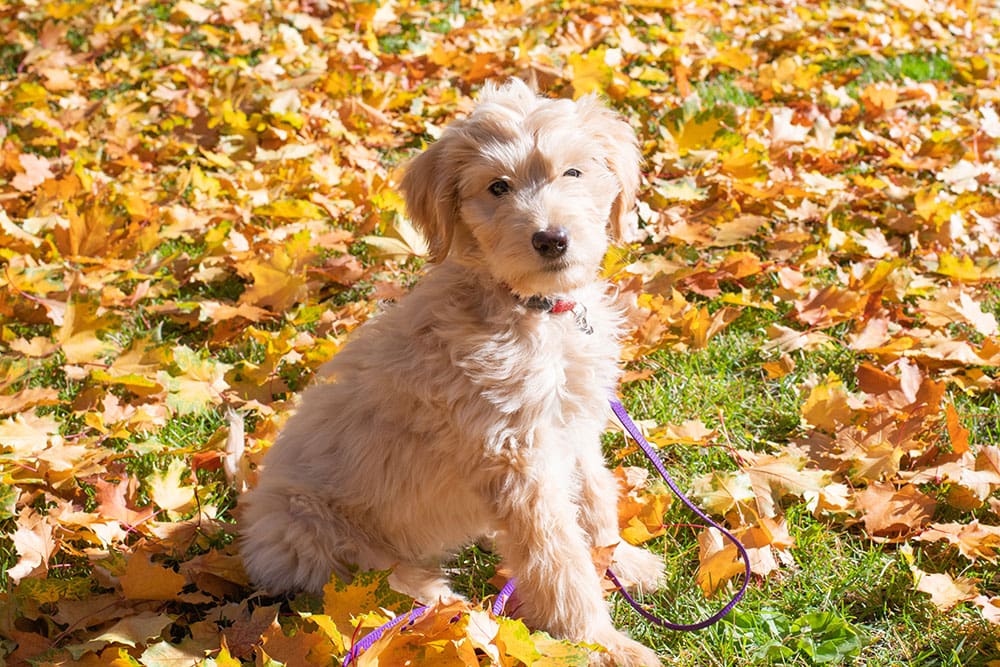- August 2, 2023
F1b Goldendoodle: Facts, Pictures, Origin & History


The Goldendoodle, a delightful mix of a Golden Retriever and a Poodle, is a popular designer breed known for its playful and affectionate nature. The F1b Goldendoodle is a cross between a Goldendoodle and Poodle. This combination of beauty, brains, and an amiable personality make this breed a standout choice for many families and individuals. Let’s take a look at all this breed has to offer.
Breed Overview
Height:
12–18 inches tall
Colors:
White, blue, silver, red, brown, gray, black
Suitable for:
Active families, those looking for a low-shedding dog
Temperament:
Loyal & loving, intelligent, easy to train, friendly, gets along with other pets
F1b Goldendoodles are special for a number of reasons. Their delightful and endearing nature makes them popular among dog owners. F1b Goldendoodles are known for their friendly disposition and affectionate nature. They are great with families and children, making them ideal pets for homes with kids. Goldendoodles have a low-shedding coat, which is beneficial for people who suffer from allergies or those who do not want to deal with excessive dog hair around their home.

Goldendoodle Breed Characteristics

Despite their uniform appearance, F1b Goldendoodles can vary greatly in size, coat type, and color due to the genetic diversity of their parent breeds. Some may inherit more traits from the Golden Retriever side, while others may lean more towards the Poodle. This means no two Goldendoodles are exactly alike, making each one uniquely special.
Energy:
+
High-energy dogs will need a lot of mental and physical stimulation to stay happy and healthy, while low-energy dogs require minimal physical activity. It’s important when choosing a dog to make sure their energy levels match your lifestyle or vice versa.
Trainability:
+
Easy-to-train dogs are more skilled at learning prompts and actions quickly with minimal training. Dogs that are harder to train will require a bit more patience and practice.
Health:
+
Some dog breeds are prone to certain genetic health problems, and some more than others. This doesn’t mean that every dog will have these issues, but they have an increased risk, so it’s important to understand and prepare for any additional needs they may require.
Lifespan:
+
Some breeds, due to their size or their breeds potential genetic health issues, have shorter lifespans than others. Proper exercise, nutrition, and hygiene also play an important role in the lifespan of your pet.
Sociability:
+
Some dog breeds are more social than others, both towards humans and other dogs. More social dogs have a tendency to run up to strangers for pets and scratches, while less social dogs shy away and are more cautious, even potentially aggressive. No matter the breed, it’s important to socialize your dog and expose them to lots of different situations.
The Earliest Records of F1b Goldendoodles in History
The Goldendoodle is a relatively new breed that originated in North America and Australia in the early 1990s. The idea was to create a larger-sized version of the popular Cockapoo that would also possess the desirable traits of the Golden Retriever and Poodle, such as intelligence, trainability, and a hypoallergenic coat.
Goldendoodles that are a cross between a purebred Golden Retriever and a purebred Poodle are known as F1 Goldendoodles. The “F” stands for filial, and the 1 refers to the generation. So, F1 Goldendoodles are essentially 1st generation Goldendoodles that are 50% Golden Retriever and 50% Poodle. An F1b Goldendoodle is a cross between a 1st generation Goldendoodle and the original Poodle parent, in a “back cross,” which is what the “b” in F1b stands for. So, F1b Goldendoodles are 75% Poodle and 25% Golden Retriever.
How F1b Goldendoodles Gained Popularity
Goldendoodles quickly gained popularity due to their adorable looks, friendly temperament, and hypoallergenic coats. As people became more aware of allergies, the demand for hypoallergenic dogs like the Goldendoodle increased. Their intelligence and trainability also made them popular as therapy and assistance dogs.
Since F1b Goldendoodles are 75% Poodle and 25% Golden Retriever, they have more Poodle genetics and characteristics. This should make them more hypoallergenic and low-shedding, which is why they are becoming increasingly popular especially for people that want a low-shedding dog or those with dog allergies.

Formal Recognition of F1b Goldendoodles
While the Goldendoodle is not officially recognized by major kennel clubs due to its status as a hybrid breed, it is recognized by the American Canine Hybrid Club and the Designer Dogs Kennel Club. F1b Goldendoodles should thus be recognized by the same organizations as the Goldendoodle.

Top 5 Unique Facts About F1b Goldendoodles
- F1b Goldendoodles are often used as guide, therapy, and assistance dogs because of their intelligence and trainability.
- No two Goldendoodles look exactly alike.
- They are generally healthy but can be prone to certain genetic conditions.
- Goldendoodles love water and are natural swimmers.
- They are known for their “teddy bear” appearance due to their curly coats and fluffy tails.
Do F1b Goldendoodles Make a Good Pet?

Goldendoodles make excellent pets for many types of households. They are friendly, intelligent, and easy to train, making them suitable for both first-time and experienced dog owners. They get along well with children and other pets, and their low-shedding coats make them a good choice for people with allergies. However, they do require regular exercise and grooming to keep them healthy and happy.

Conclusion
The F1b Goldendoodle is a charming and versatile breed that has won the hearts of many with its friendly nature, intelligence, and adorable looks. Whether you’re an active individual or a family with kids and other pets, an F1b Goldendoodle can make a wonderful addition to your home.
Featured Image Credit: Marcello Sgarlato, Shutterstock
Tags
What do you think?
Related Articles

New Puppy Checklist: Gear You’ll Need for Your New Dog
Getting a new puppy is really exciting, but before you welcome them home, it’s important to prepare your space for them. Since puppies need a

How Big Do Mini Poodles Get? Vet Reviewed Average Weight & Growth Chart – Dogster
The information is current and up-to-date in accordance with the latest veterinarian research. Learn more » When you buy a Miniature Poodle, you might not

Can Police Dogs Smell Nicotine? Vet Verified Facts & Info – Dogster
The information is current and up-to-date in accordance with the latest veterinarian research. Learn more » While cigarette sales have been declining steadily for decades,

How Old Is 5 in Dog Years? Vet-Approved Guide to Each Size of Dog – Dogster
The information is current and up-to-date in accordance with the latest veterinarian research. Learn more » A common method for calculating a dog’s age is

